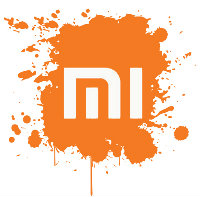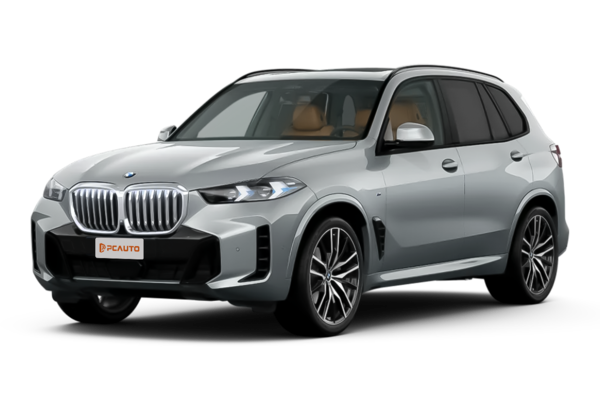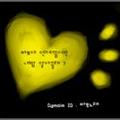Q
What is the Second Hand Price of BMW X5? Check Used Price Here
In Malaysia, the price of used BMW X5s is significantly influenced by factors such as the vehicle's age, mileage, condition, and configuration. Generally, it ranges between RM200,000 and RM400,000. For instance, a 2018 model with low mileage costs around RM250,000 to RM300,000, while a newer 2021 model can cost over RM350,000. It is recommended that buyers check real - time prices through local used - car platforms like Carlist or Mudah and inspect the vehicle in person to ensure it's in good condition.
As a luxury SUV, the BMW X5 is renowned for its excellent driving performance, spacious interior, and advanced technological features. In particular, the xDrive all - wheel drive system is well - suited to Malaysia's rainy climate. However, it's important to note that the maintenance cost is relatively high. It's advisable to check the warranty records and budget for subsequent maintenance expenses before purchasing.
Moreover, used - car prices can be affected by market supply and demand as well as new - car promotions. Comparing quotes from several dealers can help you get a better deal.
Special Disclaimer: This content is published by users and does not represent the views or position of PCauto.
Related Q&A
Q
What Segment is BMW X5?
The BMW X5 belongs to the luxury mid - size SUV segment (i.e., the Luxury Mid - Size SUV or Executive SUV sub - market). In Malaysia, it's usually classified as a D - Segment vehicle, and it falls into the category of high - end family and business vehicles, competing with models like the Mercedes - Benz GLE and Audi Q7.
It has a body length of about 4.9 meters and comes with a standard 5 - seat layout (a 7 - seat option is available). It's equipped with either a 2.0T or 3.0T engine, and there's also a plug - in hybrid version. This makes it suitable for consumers who are looking for a balance between space and performance.
In the Malaysian market, this type of vehicle is often favored by family users who value practicality or corporate clients. In particular, the X5, thanks to its brand premium and the standard xDrive all - wheel drive system, can handle the diverse local road conditions.
It's worth noting that Malaysia's vehicle classification refers to the engine displacement grading of the Royal Malaysian Customs Department (JKDM). So, the 3.0L version of the X5 may incur higher taxes, while the 2.0L version is more price - competitive.
If you're considering the used car market, the X5 generally has a better resale value than non - luxury brands, but you need to factor in the maintenance costs when making your budget. Japanese alternatives in the same class, like the Lexus RX, offer a longer warranty period, while German competitors focus more on driving technology. Consumers can make a choice based on their own needs.
Q
What is the Reslae Value of BMW X5?
The BMW X5 has an excellent performance in the used - car resale value in Malaysia. Generally, the residual value rate of a 3 - year - old vehicle can be maintained at around 60% to 70%. It specifically depends on factors such as the vehicle's condition, mileage, maintenance records, and configuration versions. There is a stable demand for German luxury SUVs in the local market. Additionally, the X5 is quite popular in the used - car market thanks to its brand appeal, powerful performance (like the 3.0T engine in the xDrive40i), and luxurious interior features (such as the panoramic sunroof and the iDrive system).
However, it should be noted that the post - 2018 facelifted G05 generation, equipped with newer technological features (such as the 12.3 - inch dual - screen and intelligent driving assistance), has a better resale value advantage than the earlier F15 generation. It is recommended that car owners have their vehicles regularly serviced at authorized BMW service centers and keep complete maintenance records, which can significantly increase the resale value.
Moreover, in Malaysia's hot climate, special attention should be paid to the maintenance of rubber parts (such as sunroof seals) and the battery. These details can affect the final transaction price. Compared with its counterparts in the same class, the X5's resale value rate ranks among the top in the luxury mid - to - large SUV segment.
Q
How Many CC is BMW X5?
The engine displacement of the BMW X5 varies depending on the model and year. Currently, the common versions in the Malaysian market include the X5 xDrive40i, which is powered by a 3.0 - liter inline - six turbocharged engine with a displacement of 2,998cc (about 3.0L). The high - performance X5 M50i is equipped with a 4.4 - liter V8 twin - turbocharged engine with a displacement of 4,395cc (about 4.4L). Additionally, the plug - in hybrid X5 xDrive45e also uses a 3.0 - liter six - cylinder engine combined with an electric system.
Displacement (CC) is a unit used to measure the volume of an engine's combustion chamber, which directly affects power output and fuel efficiency. Generally, the larger the displacement, the stronger the power, but the higher the fuel consumption. When choosing an SUV in Malaysia, apart from displacement, you also need to consider the road tax system. The road tax for vehicles with a displacement over 1,800cc will increase significantly. The engine technology of the BMW X5, such as TwinPower Turbo, can balance performance and fuel economy, making it suitable for local consumers who pursue luxury and practicality.
Q
What is the Engine in BMW X5?
The BMW X5 comes with a variety of engine types. Some models are equipped with a 2.998L (3.0L) inline 4-cylinder turbocharged engine. For example, the 2025 BMW X5 xDrive40i M Sport has an intake type of Turbo. The engine has a maximum horsepower of 381PS, a maximum power of 280kw at a maximum power speed of 5000rpm, a maximum torque of 540N·m at a maximum torque speed of 1750rpm. There are also models like the 2025 BMW X5 xDrive50e M Sport, which also uses a 2.998L (3.0L) inline 4-cylinder turbocharged engine. This engine has a maximum horsepower of 489PS, a maximum power of 360kw at a maximum power speed of 5000rpm, a maximum torque of 700N·m at a maximum torque speed of 1750rpm, and it is equipped with a permanent magnet synchronous motor. Different engines offer drivers a diverse range of power options to meet different needs and driving preferences. Whether you're after a comfortable daily drive or a more powerful driving experience, you can find a suitable model.
Q
What is the Gearbox Type of BMW X5?
The BMW X5 is equipped with various types of transmissions depending on different models and years. Currently, the common models in the Malaysian market are mainly equipped with the Steptronic 8 - speed automatic manual transmission (8HP series). This transmission is provided by ZF Friedrichshafen AG and is known for its smooth shifting experience and fast response speed. It is especially suitable for SAV models like the X5, which combines both sportiness and luxury. For the high - performance version, the X5 M Competition, it is upgraded to a more aggressive 8 - speed M Steptronic transmission, which enhances the shifting logic and the ability to withstand high torque.
It's worth mentioning that some plug - in hybrid versions of the X5 xDrive45e also use the same 8 - speed transmission, but it has been optimized for the hybrid system. In Malaysia's hot and rainy climate, this type of transmission shows good durability, and the original - factory maintenance packages provided by local authorized dealers already include regular replacement of transmission oil.
With the development of technology, BMW has also introduced a mild - hybrid system to work in tandem with the transmission in some models in recent years, further reducing fuel consumption. This means more economical daily usage costs for Malaysian consumers.
If you're considering a used car, X5 models before 2018 might be equipped with a 6 - speed transmission, while the latest models come standard with an 8 - speed transmission across the board. It is recommended to check the specific configuration via the chassis number before purchasing a car.
Q
What is the PCD Size of BMW X5?
The PCD (Pitch Circle Diameter) of the BMW X5 is 5x120 mm, which means the diameter of the circle formed by the five bolt holes on the wheel hub is 120 mm. This specification applies to most BMW X5 models, including those sold in the Malaysian market. Understanding the PCD size is crucial when replacing the wheels or upgrading the brake system because an incorrect PCD can lead to the wheels not being installable or affect driving safety.
Apart from the PCD, when choosing wheels, you also need to pay attention to the center bore diameter (for example, it's usually 74.1 mm for the BMW X5) and the offset (ET value). These parameters together ensure a perfect match between the wheels and the vehicle. When modifying the wheels, Malaysian car owners are advised to choose products from regular manufacturers and consult professional technicians to ensure compliance with the original factory specifications, while also maintaining the vehicle's handling and safety.
As a luxury SUV, the wheel design of the BMW X5 not only emphasizes aesthetics but also takes performance and durability into account. Therefore, original or certified accessories can better unleash the vehicle's potential.
Q
Does BMW X5 Have Apple Carplay?
Yes, the BMW X5 does come with Apple CarPlay functionality. This feature is typically either a standard or an optional configuration in models sold in the Malaysian market, depending on the model year and trim level. Apple CarPlay enables users to seamlessly connect their iPhones via the in - car display, allowing them to use common apps such as maps, music, and make calls, which enhances convenience and safety while driving. The integration of BMW's iDrive system with Apple CarPlay is extremely smooth, supporting various operation methods like touchscreen, rotary knob, or voice control.
In addition, the BMW X5 also supports wireless Apple CarPlay, which automatically connects without the need for a cable, further streamlining the usage process. This feature is especially practical for Malaysian users, given the high demand for local road navigation and entertainment. Besides Apple CarPlay, the BMW X5 is also compatible with Android Auto, catering to the needs of different smartphone users.
If you're considering purchasing or already own a BMW X5, it's advisable to refer to the vehicle manual or contact a BMW dealer in Malaysia to confirm the detailed configuration of your specific model, ensuring you get the best possible experience.
Q
What is the Tyre Brand of BMW X5?
The original - equipped tire brands of the BMW X5 in the Malaysian market may vary depending on the model year and configuration. Common high - end tire suppliers include Michelin, Bridgestone, Pirelli, and Continental. These brands are known for their excellent grip, quietness, and durability, which are particularly suitable for the needs of high - performance SUVs like the X5.
For Malaysian consumers, when choosing tires, in addition to considering the brand, they also need to pay attention to the local climate conditions. For example, in rainy weather, it is recommended to choose a tire tread design with excellent drainage performance. And for those who often drive long - distances, wear - resistant tires can be a priority.
If you need to replace the tires, it is recommended to refer to the specifications officially recommended by BMW (such as the common 275/45 R20 or 315/40 R20, etc.), and obtain genuine products through authorized dealers or professional tire shops. At the same time, regularly check the tire pressure and wear to ensure driving safety.
In addition, some car owners may upgrade to sport - type or all - terrain tires according to their personal preferences. However, it should be noted that such adjustments may affect the fuel consumption and handling performance calibrated by the original factory.
Q
Is BMW X5 a Good Car? Learn the Pros and Cons Here
As a luxury SUV, the BMW X5 has performed quite impressively in the Malaysian market. Its advantages include strong power performance. In particular, the 3.0T or 4.4T engines it is equipped with offer a smooth acceleration experience. At the same time, it has excellent handling. The chassis tuning strikes a balance between comfort and sportiness, making it suitable for Malaysia's diverse road conditions.
In terms of the interior, the X5 uses high - quality materials and advanced technological configurations, such as the iDrive system and the full - LCD instrument panel, which enhance the driving experience. Moreover, it has a spacious interior, especially the rear seats and the trunk, making it suitable for family outings.
However, the drawbacks of the X5 lie in its relatively high maintenance costs and fuel consumption. Especially in congested urban areas, the long - term usage cost may be quite high. Additionally, some owners have reported that its suspension feels a bit stiff on rough roads.
For Malaysian consumers, if they have sufficient budget and value brand and driving quality, the X5 is a good choice. However, they need to weigh the daily usage costs. Competitors in the same class, such as the Mercedes - Benz GLE and the Audi Q7, are also worth considering as they each have their own advantages in different aspects. It is recommended to take test drives and make comparisons based on personal needs.
Q
What is the Width of BMW X5?
The body width of the BMW X5 is 2,004 millimeters (excluding the rear - view mirrors). When including the rear - view mirrors, it expands to approximately 2,200 millimeters. This dimension is at the mainstream level among luxury SUVs. It not only ensures the comfort of the lateral space inside the vehicle but also can adapt to the common urban roads and parking lots in Malaysia. As a mid - to large - sized SUV that emphasizes both sportiness and luxury, the width design of the X5 takes both dynamic stability and practicality into account. Its wheel - track layout and short front - overhang design further optimize the handling performance, making it suitable for the diverse road conditions in Malaysia. Compared with its competitors in the same category, such as the Mercedes - Benz GLE (width: 1,947 millimeters) and the Audi Q7 (width: 1,970 millimeters), the X5 is slightly wider. However, when making an actual choice, other parameters such as wheelbase and ground clearance also need to be comprehensively considered. For Malaysian consumers, while the width of the X5 provides a spacious riding experience, they still need to pay attention to the passability on some narrow roads in old urban areas or in mechanical parking spaces. It is recommended to measure the commonly used parking spaces on the spot before purchasing the vehicle. This model offers multiple powertrain versions in the Malaysian market, including fuel - powered and plug - in hybrid options, meeting the different needs of users for performance and environmental protection.
Latest Q&A
Q
How much is a new Toyota Yaris 2025?
The all-new 2025 Toyota Yaris is expected to hit Malaysian showrooms with a price tag ranging from RM 70,000 to RM 90,000, though the final figure will depend on the trim level and any optional extras you tick. The base model will likely stick with the tried-and-tested 1.5L naturally aspirated engine paired with a CVT gearbox, while higher-spec variants should come loaded with more safety tech, including the Toyota Safety Sense suite – think pre-collision warning and lane-keeping assist, for starters.
In the local B-segment hatchback scene, the Yaris has always been a hit thanks to its fuel efficiency, reliability, and nimble handling. What sets it apart from rivals like the Honda City Hatchback or Nissan Almera? A sportier exterior design that gives it a bit more attitude.
But hey, don’t forget to factor in extra costs like road tax, insurance, and registration fees when budgeting – those can add up. Your best bet? Swing by an authorized Toyota dealer to check out the latest promos. Toyota Malaysia often runs deals like low-interest financing or free service packages, which are definitely worth asking about.
Oh, and keep an eye out for the 2025 model’s upgraded infotainment system – rumor has it wireless Apple CarPlay and Android Auto might finally make the cut, making your daily drive that much more convenient.
Q
How much horsepower does a 2025 Toyota Yaris have?
Toyota hasn't officially spilled the beans on the exact horsepower figures for the 2025 Yaris in Malaysia just yet. But if we take a peek at the current model's powertrain setup, it's a safe bet we'll still see the 1.5-liter four-cylinder naturally aspirated engine making a return. We're probably looking at around 106 to 110 horsepower, paired with that trusty CVT gearbox – perfect for zipping around the city and keeping fuel costs in check.
Now, if they decide to bring in the GR Sport performance trim, that's where things could get interesting. Word on the street is it might pack a punch with a 1.6-liter turbocharged engine, potentially cranking out over 200 horsepower. But hey, don't hold me to that until Toyota Malaysia makes it official, right?
Here's the thing though – horsepower isn't the be-all and end-all when it comes to a car's performance. Torque delivery, how light the body is (thanks to the TNGA platform the Yaris uses), and how efficient the transmission is all play a huge role too.
So, for Malaysian buyers, it really boils down to what you need. If you're mostly using it for daily commuting, the standard Yaris with its focus on fuel efficiency is going to be the practical choice. But if you crave a bit more driving excitement, keep an eye out for any news on that sportier variant they might bring in later.
Also, let's not forget Malaysia's hot and humid climate, which can really test an engine's cooling system and a gearbox's durability. Regular maintenance is key to keeping that powertrain running in tip-top shape.
Q
What kind of engine is in the Toyota Yaris GR 2025?
Under the hood of the 2025 Toyota Yaris GR lies a 1.6-liter three-cylinder turbocharged engine, a powerplant renowned for its impressive output and efficiency. Cranking out a solid 257 horsepower and a healthy 360 Nm of torque, it pairs with a slick 6-speed manual gearbox or an optional automatic, delivering a genuinely engaging driving experience that enthusiasts crave.
This engine isn't just about raw power, though. It's packed with advanced turbocharging tech and direct injection, which not only boosts performance but also keeps fuel economy in check – a real plus for Malaysia's diverse driving conditions. Whether you're navigating busy city streets during the daily commute or carving up twisty mountain roads on the weekends, this little hot hatch handles it all with confidence.
And let's not forget the GR-Four all-wheel-drive system. It's a game-changer, significantly upping the car's grip and stability, especially when the rain starts to pour and the roads get slippery. For Malaysian petrolheads, the Yaris GR isn't just another peppy hatchback; it's a labor of love from Toyota's Gazoo Racing division, a testament to the brand's deep-seated expertise in crafting thrilling, sporty machines.
Sure, there are other players in the hot hatch segment, each with its own set of strengths. But if you're after a package that balances performance, everyday usability, and Toyota's legendary reliability, the Yaris GR is definitely one that should be high on your shortlist.
Q
Does the 2025 BMW X3 require premium gas?
The 2025 BMW X3 is officially recommended to use RON 95 or higher gasoline in the Malaysian market. However, for optimal performance, it's advisable to go with RON 97 or higher premium fuel. Why? Because high-octane gasoline better suits the high compression ratio design of its turbocharged engine, reducing the risk of knocking and optimizing power delivery.
In Malaysia, gasoline grades are RON 95 and RON 97, with RON 97 being the premium option. While it does cost a bit more at the pump, it offers better combustion efficiency. Sticking with it long-term can help minimize carbon buildup and potentially extend the engine's lifespan.
Now, here's the thing: if you have to temporarily fill up with RON 95, it won't immediately damage the engine. Modern cars, including this Bimmer, are equipped with knock sensors that can automatically adjust ignition timing. But, consistently using lower-octane fuel might lead to reduced performance and increased fuel consumption over time.
For a brand like BMW, which prides itself on driving dynamics, following the manufacturer's fuel recommendations is key to keeping the vehicle performing at its peak. The good news is, RON 97 is widely available at most Malaysian petrol stations, so owners shouldn't have any trouble finding it when they need to refuel.
Q
What colors are the BMW 3 Series 2025?
The 2025 BMW 3 Series has entered the Malaysian market with a solid color palette to suit different tastes. There are timeless classic colors: Black Sapphire metallic, Alpine White solid, and Brooklyn Grey metallic. For those wanting a bit more flair, there's the eye-catching Arctic Race Blue metallic. And if you're really looking to stand out, keep an eye out for potential special finishes like matte or exclusive metallic options, BMW usually has something extra for those who want to personalize their ride.
Now, when picking your 3 Series hue here in Malaysia, personal preference obviously leads the way, but our local climate is worth a thought too. Lighter shades tend to be more practical in the heat – they are less likely to show dust and help reflect some of that harsh sunlight, which can make a difference when you step into a parked car. Darker colors, though, exude that classic, premium dignified and luxurious vibe that BMW does so well.
One thing BMW doesn't skimp on is paint quality. They use high-tech stuff like multi-layer application and nano-coatings. It's not just about making the car look stunning – these paints are tough, too. Expect good scratch resistance and corrosion protection, which is pretty handy given our frequent rain and humid conditions.
If you're still on the fence about which color to go for, it's advisable to head down to your local authorized BMW dealership. Checking out the actual color swatches or, even better, seeing the colors on a real car under different lighting is the way to go. Trust me, colors can look surprisingly different in the showroom versus outside in the sun.
View MoreRelated News

BMW X5 will become BMW's first model equipped with a hydrogen fuel cell, with a range of 504 kilometers
JamesSep 8, 2025

How strong is the overall strength of the BMW X5 that it even makes the wealthy give up the Benz GLE and Audi Q7?
RobertSep 25, 2024

The 2024 BMW X5 xDrive50e is priced at RM 528,100, with 0-100km/h just taking 4.8 seconds
LienJun 26, 2024

Neue Klasse platform's first mass-produced vehicle, the all-new BMW iX3 makes its debut, looks just like a concept car
LienSep 8, 2025

BMW's all-new iX3 to be unveiled on September 5, built on the Neue Klasse platform
Kevin WongSep 1, 2025
View More


















Pros
Cons